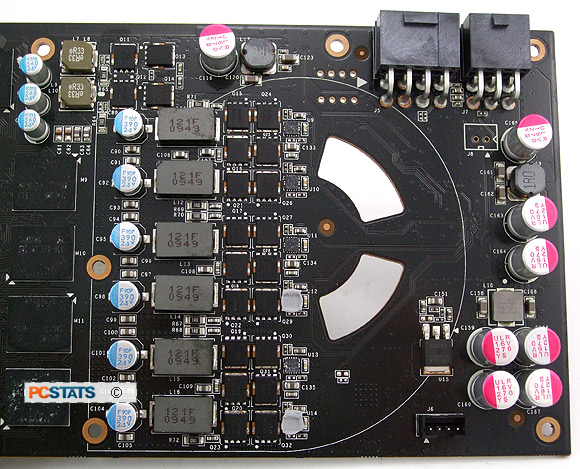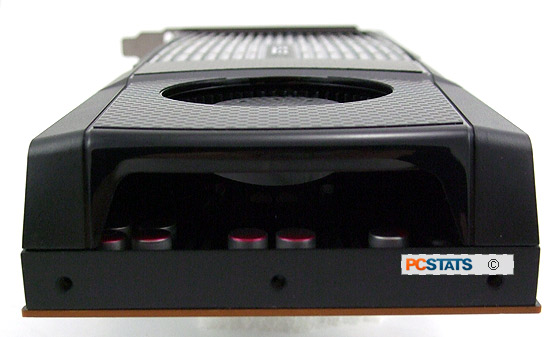 |
| Overclocking Results: |
|
|
The ASUS
ENGTX480 2DI/1536MD5 videocard ships clocked at 701MHz GPU, 924MHz memory and 1401MHz
shader, but what fun is that?
Using
nVidia's nTune utility PCSTATS is going to try its hand at overclocking this
Fermi-based GTX 480 a little faster...
Needless to say, we had to switch out the usual
power supply typically used for videocard benchmarking at PCSTATS with a newer 80-Plus gold rated Seasonic X750 model that offers enough
power to actually power the monster GTX480!
GPU Overclocking
Using nVidia's nTune software, the GPU was
overclocked from its default state of 701MHz. The Geforce GTX 480 easily managed
759MHz, 804MHz, 836MHz, 872MHz and 894MH, but crashed when we attempted to run
it at 894MHz or even 882MHz. Eventually we settled on a max GTX480 GPU
overclock of 869MHz, which pushed the shaders up from 1401MHz to
1738MHz in the process.
Memory
Overclocking
With the GPU back at default speeds our attention
turned to the 1536MB of GDDR5 memory. Using nVidia's nTune software, the memory
was overclocked from its default state of 924MHz (or 3696MHz quad-pumped) in
small increments. The RAM easily managed 1023MHz but caused the system to crash
if pushed to 1109MHz. After a few more minutes of different clock speeds, and
burning our fingers on the GTX480's heatsink a couple times as fans were
repositioned around it, PCSTATS finally settled on a max GDDR5 memory
overclock of 1055MHz, or 4220MHz quad-pumped.

Default settings for the GTX480 Videocard.
Overclocking both the NVidia Geforce GTX480 GPU and
GDDR5 memory together proved to be way more difficult. The Geforce GTX480
already spits out a ton of heat in its standard operating parameters, so the
first step was to boost fan speed to 100%. The heatsink gets pretty hot, and we
managed to burn the back our hand a couple times as fans were repositioned near
the ASUS ENGTX480 to provide additional cooling.

The first GPU/Memory overclocking attempt was
869MHz GPU / 1055MHz memory, which promptly crashed. Pressing on PCSTATS tried
848/1055... crash, 826/1042....crash, 819/1008.... okay! After a few more
attempts we managed to increase the memory speed a little further for a final
maximum overclock of 819MHz GPU and 1042MHz memory.

Prelude to Benchmarks
The
details of how the ASUS ENGTX480 2DI/1536MD5
videocard was configured for benchmarking; the specific hardware, software
drivers, operating system and benchmark versions are indicated below. All
benchmarks for the videocard were run in Windows 7 Ultimate, the reference video
cards were tested in both Windows XP and Vista for the DX10 benchmarks. PCSTATS
is in the process of making the transition to a Windows 7 and Intel CPU test
platform, so keep this in mind as you scan the benchmark results. In the second
column are the general specs this videocard is compared against.
 |
| PCSTATS Test System Configurations |
|
|
Benchmark results are
organized by GPU manufacturer first (AMD/ATI or nVidia), then by GPU generation,
and then by GPU class (high end, mainstream, value). This approach provides a
clearer view of how performance can differ from generation to generation, and
class to previous generation. The product being tested is marked with the red
colour bar.
